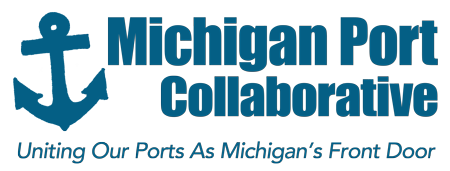Michigan Port Collaborative Economic Impact Forum
“Big Reveal”
Meeting Was Held April 18, 2019
Radisson Hotel, Lansing, Michigan
Meeting Background:
While a number of economic impact studies have been conducted over the years, using traditional maritime measurements that estimated the economic impact of Michigan’s commercial port activity; the important economic impacts of tourism and recreational activities at Michigan’s ports have been largely neglected. Therefore, the purpose of this “full spectrum” study was to calculate the economic impacts of Michigan’s port system to include all economic components including commercial, tourism and recreation.
What was shared:
Component #1:
This study produced a report that communicates a compelling story about the economic and fiscal impacts of Michigan’s robust port system on the State of Michigan as well as its impact on the federal economy. Key components of the report included:
- The economic activity (both direct and ripple effects) of the ports
- The economic impact (both direct and ripple effects) of the ports
- The number of jobs supported in the State of Michigan due to the port system
- The amount of labor income in the State of Michigan attributed to the port system
- The contributions of the ports to Michigan’s GDP
Component #2:
A user-friendly Excel-based input-output modeling template has been produced that can be used by each port to compute their economic activity and economic impact on an ongoing basis. This modeling program will prompt the user to input a handful of entries upon which each of the metrics listed above will be generated for that individual port.
Project summary and value:
The information gained from the meeting will provide the basis for investment into harbors by showing the value added to the community for harbor asset management. By using the information gathered during the study, the community can decide on the best areas to invest for the best return on investment (ROI). This predictive analysis will help Michigan’s port and harbor communities maximize their harbor’s features into a sustainable community asset rather than being perceived as an economic liability by local, state and federal governments.
